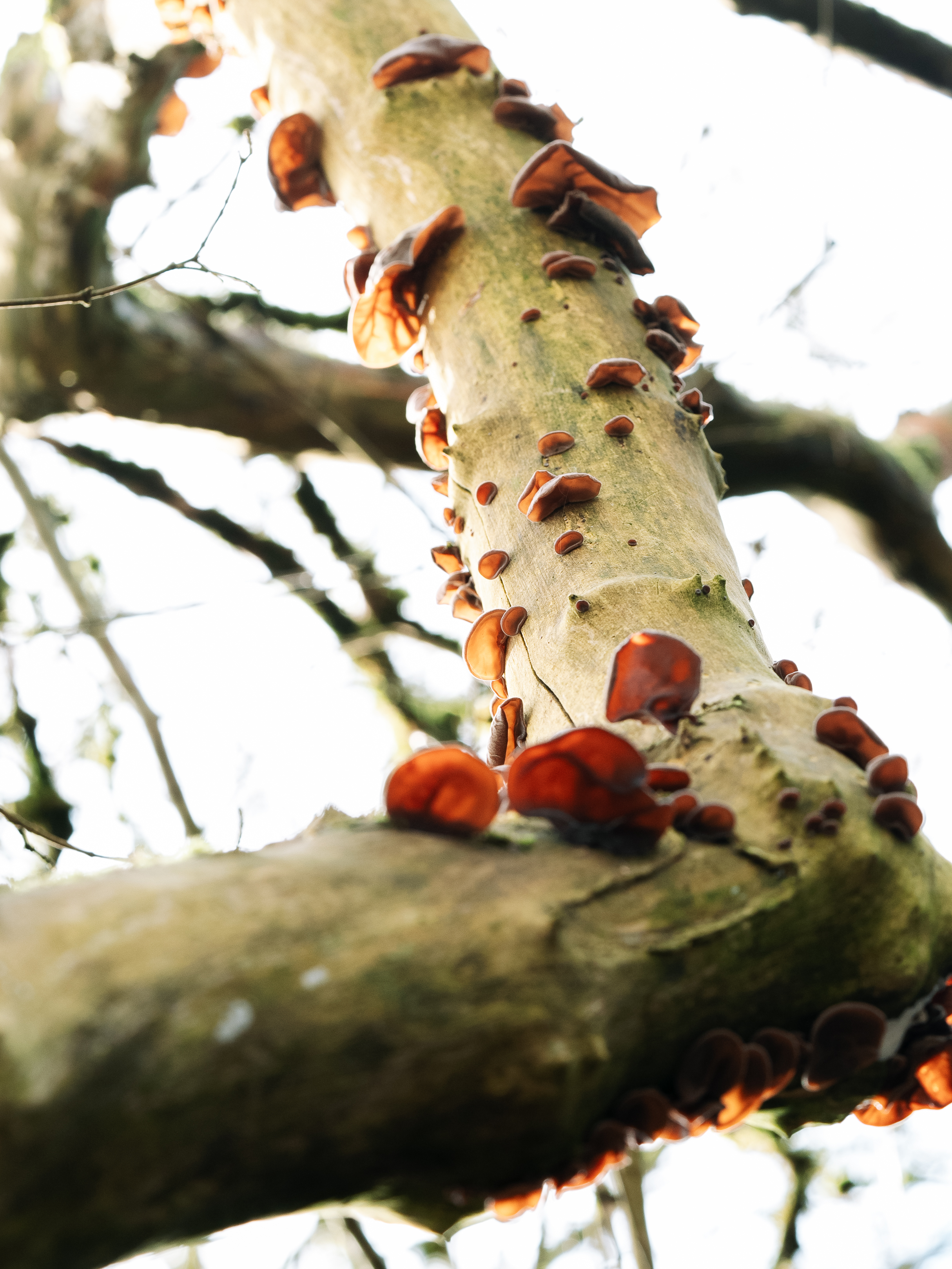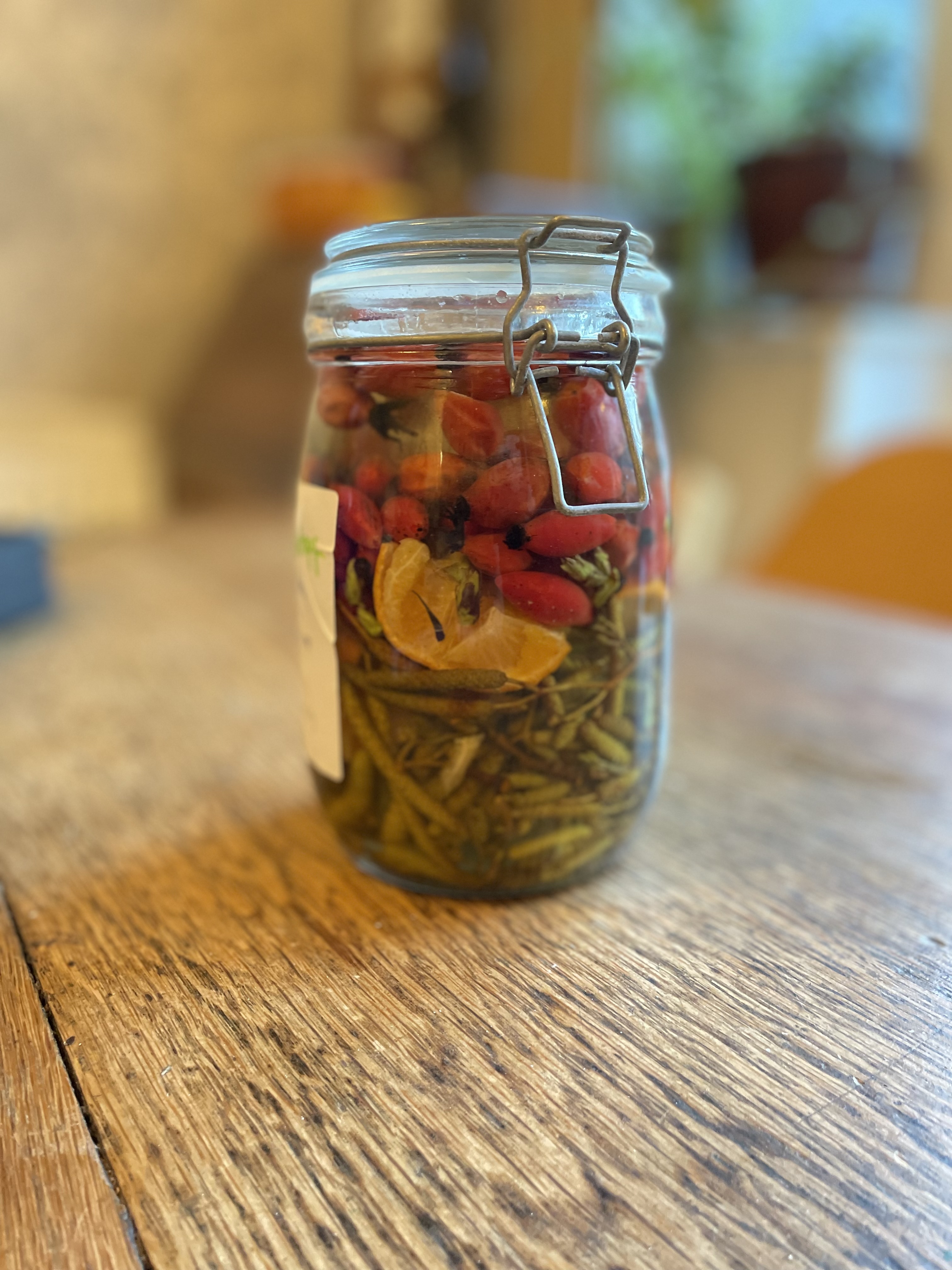
How To Forage Wild Garlic
Allium ursinum
Other names: Ramsons, Bear Garlic
Season: December - June
Habitat: Broadleaf woodland spaces (often growing as a ‘carpet’) and particularly fond of riverbanks.
Description: Long, delicate leaves that taper at the top and the base. Leaves are hairless and grow from small clusters of bulbs. Flower buds start to appear early on and open to show small clusters of white, star-shaped flowers, eventually producing compact, green seed pods. The smell is unmistakably that of garlic, spring onions or leeks - this is also your most reliable ID feature.
Poisonous plants to be aware of: Lords and Ladies, Daffodils, Bluebells, Lily-Of-The-Valley, Autumn Crocus

I generally tend to think that there are three ‘celebrities’ of the foraging world. I’m not referring to basket-clad television personalities, of course, but instead the three most sought-after species: mushrooms (general), elderflower and wild garlic.
Arguably the species that garners the most of attention, Wild Garlic is a bit of a household name, popping up on restaurant menus across the country. You can probably even buy it fresh from a quality greengrocer when it is in season, or more concerningly, it can be found sold on a large commercial scale in places like Waitrose and other middle-class food retailers - this is almost certainly because a forager has sold their wild soul for a pile of cash, but more on that shortly.
Forage Box has waxed lyrical about wonderful wild garlic before and we certainly aren’t the only ones shouting loudly about it right now. This is for good reason too - it probably offers more than any other allium (onions, leeks, garlic, etc.) in terms of flavour, versatility, availability and status. A quick peruse of wild garlic recipes and you will find it used in soups, sauces, salads, sandwiches, side dishes and, of course, pesto. Have a look at our own recipes page for inspiration.
You will find wild garlic growing prolifically in woods across the country. It tends to favour banks near to running water but this is by no means the rule - it is a plucky little plant and will happily colonise any fertile bank from deepest winter to the middle of summer, if given the opportunity. Keep your nose sharp when stomping through the undergrowth and you will be in no doubt when you reach wild garlic territory.
Picking Wild Garlic
The whole plant is edible, including the leaves, stems, flowers, buds, seeds and bulbs, but it is illegal to dig up any plant without prior permission from the landowner. Actually, it would be largely pointless digging it up as there is no real ‘bulb’ to speak of, unlike the garlic you’ll find in the supermarket. So it is best to stick to everything happening above the ground.
The mark of a good forager, in my opinion, is made by how they harvest their wild garlic. Hand-pick a maximum of one or two leaves per plant, being careful to move through the wood to fill your basket and not concentrating on a small space. Use your nose as a guide to checking each leaf to make sure a poisonous lookalike doesn’t make its way into your dinner - have a read of poisonous lookalikes to be aware of further up the page. You’ll soon find that your basket fills up nicely, with plenty left behind for the plant to recover properly and enough for the other woodland creatures that rely on it as a food source.

The absolute no-no is to do what a lot of commercial (or greedy) foragers do and ‘clear fell’ your wild garlic patch. This is the practice whereby each tuft of leaves is grabbed as a whole bunch then sliced at the base to take every leaf of the plant. Not only is the scar left behind unsightly (always leave no trace!) and hugely unsustainable for the plant, it is also a potentially dangerous method because there is no guarantee that you haven’t also foraged ivy, lords and ladies or some other toxic plant.
Whilst collecting leaves in March and April, you will notice the unopened flower buds poking up in the centre of each cluster of leaves. The actual stems are surprisingly sweet but the closed buds have a much more intense flavour than the leaves. With these, you can actually be a bit more heavy-handed with your picking, because removing them will cause the plant to ‘stress’ and send up more in their stead. After all, it is the ultimate aim of the plant to reproduce so it will keep trying its hardest to do so. Once wild garlic has thrown up good numbers of these flower buds above the leaves, it is easy to harvest plenty in quick succession, barely doing any damage to the plant and getting way more bang for your buck in the meantime.

Wild garlic flowers are a beautiful white, with an almost bouncy look to them as they sway in the wind. These are just as punchy as the unopened buds and make fantastic garnishes for any savoury dish. There is something quite remarkable about a woodland floor in full bloom, so care must be taken to not take too many from one patch, mainly on aesthetic grounds, but also because there really are only so many wild garlic flowers one can consume before they start to deteriorate in the fridge - cut flowers simply do not last as long as their leafy counterparts - so only take what you know you will eat in the next couple of days.
Once May rolls around and the tree canopy starts to close over, you’ll find that the quality of wild garlic leaves are hugely inferior to how they were a couple of months earlier. Yellowing, sludgy and stinky, they are best left as a natural mulch for the woodland floor. However, the flower stems left behind should still hold proud small clusters of green seed pods, where the flowers have been pollinated. These tiny nuggets are about as intense a wild garlic flavour that you’ll get and make a great garlic caper or powerful curry garnish. Gather and use sparingly, remembering that the plant will rely on these for reproduction. Once these mature to their blackened seeds, these can also be eaten as a sort-of ‘wild nigella seed’ alternative. Just remember to put some in your pocket for scattering in an area where wild garlic hasn’t colonised yet - any riverbank or steep-sided woodland space will do.

A Word On Commercial Foraging
Due to its rise in popularity, wild garlic does suffer from over-harvesting, but this is generally not due to hobbyist foragers picking for home-cooking, but commercial pickers who are driven by profit. This increased demand means that considerate (and even legal) picking often goes out the window, with the aforementioned ‘clear felling’ technique being all too common, not allowing for optimum plant recovery and leaving large scars through beautiful woodland. It actually makes me quite sad to see wild garlic on restaurant menus or sold in supermarket aisles, as I know that this will most likely have been picked in huge quantities, sold to a wholesaler and distributed to the highest bidder. There is likely to be a portion lost in transit, storage and wastage, so it feels like an unnecessary burden on nature to take this crop that is only found in the wild. Besides, there are a number of other edible alliums that can be found in the wild, not least two major invasive species in Few-Flowered Leek and Three-Cornered Leek, which are an ecological nightmare in the UK and should be picked with gay abandon! (N.B. It is illegal to encourage the spread of invasive species, so care should still be taken to make sure the bulbs of these two, if accidentally pulled out, are not disposed of irresponsibly)
The nuanced bit: there is a sliding scale to commercial picking and the harvesting technique is the biggest gripe. I don’t have much of a problem with someone making a few jars of wild garlic pesto from some woods behind their house to sell at a farmers market or similar. Providing each leaf is hand-selected as a personal forager would do, this seems perfectly fine to me (providing they have permission to, of course). It’s when kilograms are picked in order to fulfil a large bulk order that the sustainability goes out the window - again, if it was picked leaf by leaf, that would probably be ok.
Using Wild Garlic
Whilst wild garlic has a strong flavour, it is best to treat it more like a soft herb than its stronger cousin, bulb garlic, so adding it to your dish at the end of cooking is a good idea. Use the green seed pods to liven up a salad or decorate any dish with a small bunch of the flowers. The flower stem is surprisingly sweet and is a nice thing to crunch on when out for a morning walk in the sun. Garlic is such a versatile flavour in savoury dishes, so find any garlic-led recipe and substitute in wild garlic for a foraged twist. It ferments well, freezes well, dries well and is perfect in a number of dishes - you can see what all the fuss is about!
Learn More
Click here to join us on a Wild Garlic Special Workshop
Click here to try out some of our Wild Garlic Recipes
Click here to check out some of our Forage Box TV videos where wild garlic features


